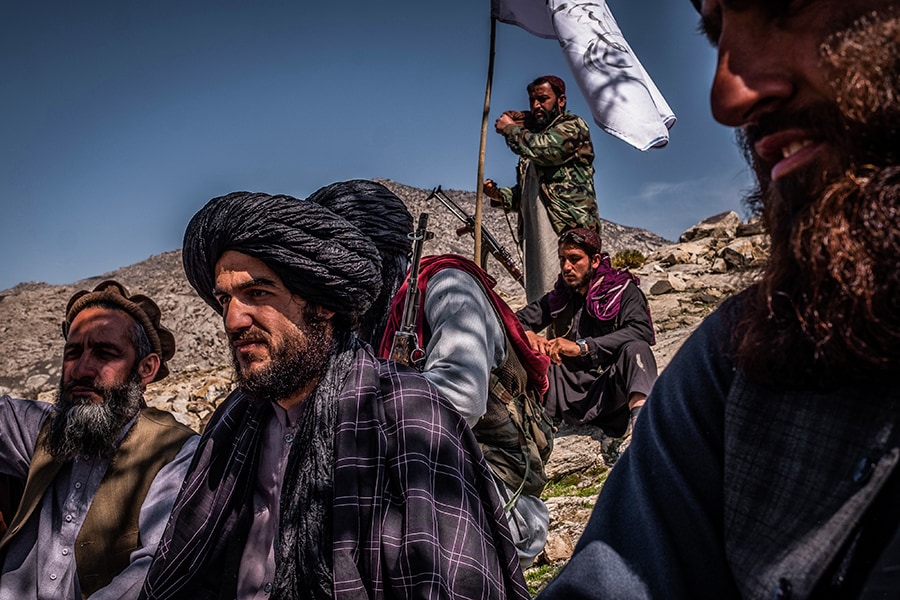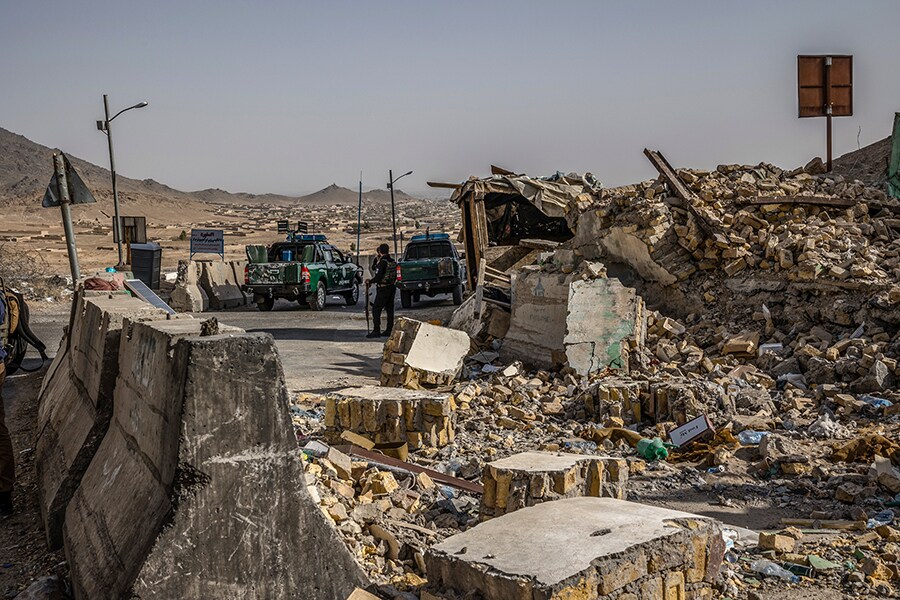
Afghan collapse accelerates as two vital cities are falling to the Taliban
With the Taliban's sudden gains in Kandahar, in the country's southern Pashtun heartland, and Herat, a vital cultural and economic hub, the insurgents appear to be nearing a complete military takeover
 Members of the Taliban in an area controlled by the group last year in Afghanistan’s Laghman Province on March 13, 2020. The American military presence in Afghanistan is set to end and the recent string of Taliban military victories has not moved President Biden to reassess that plan, officials said; Image: Jim Huylebroek/The New York Times
Members of the Taliban in an area controlled by the group last year in Afghanistan’s Laghman Province on March 13, 2020. The American military presence in Afghanistan is set to end and the recent string of Taliban military victories has not moved President Biden to reassess that plan, officials said; Image: Jim Huylebroek/The New York Times
KABUL, Afghanistan — Two more major cities in western and southern Afghanistan were on the verge of collapse to the Taliban on Thursday as the insurgency’s race to seize control of the country accelerated.
With the Taliban’s sudden gains in Kandahar, in the country’s southern Pashtun heartland, and Herat, a vital cultural and economic hub, the insurgents appear to be nearing a complete military takeover. Only four major cities — including the capital, Kabul — remain under government control, and two of them are under siege by the Taliban.
Over the past week, the Taliban have toppled city after city in a stunning advance that has well positioned the insurgents to attack Kabul. It has also laid bare the Afghan security forces’ nearly complete collapse less than three weeks before the United States is set to completely withdraw. Some U.S. officials fear the Afghan government will implode within 30 days and are preparing for an evacuation of the U.S. Embassy in Kabul.
The insurgents now control more than half the country’s 400-odd districts. And with the fall of Kandahar and Herat, along with another provincial capital south of Kabul, Ghazni, and one in the northwest, Qala-e-Naw — all on Thursday — the insurgents will control 13 provincial capitals.
It was a devastating 24 hours for government forces in Afghanistan.
©2019 New York Times News Service



 A police outpost in Kandahar, Afghanistan on Aug. 4, 2021, that was destroyed by the Taliban. Two major cities in western and southern Afghanistan were on the verge of collapse to the Taliban on Thursday, Aug. 12, 2021, as the insurgency’s race to seize control of the country accelerated; Image: Jim Huylebroek/The New York Times
A police outpost in Kandahar, Afghanistan on Aug. 4, 2021, that was destroyed by the Taliban. Two major cities in western and southern Afghanistan were on the verge of collapse to the Taliban on Thursday, Aug. 12, 2021, as the insurgency’s race to seize control of the country accelerated; Image: Jim Huylebroek/The New York Times



